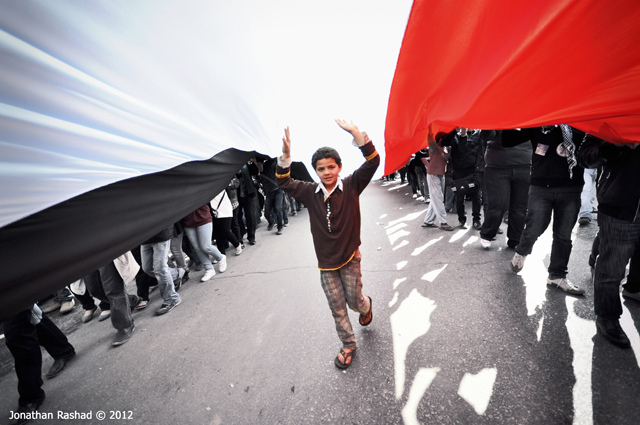The uprisings of 2011 dramatically revealed the weakness of the Arab state. That earthquake unleashed aftershocks that are still being felt, and even states and ruling elites that did not experience severe protests have been shaken. As the Egyptian political scientist Nazih Ayubi observed some years ago, Arab states may be fierce, but that does not mean that they are strong, let alone legitimate.[1]
The modern Arab political order that began to take shape after World War I seemed to have consolidated into durable states following the nationalist revolutionary upheavals of the 1950s and 1960s. In the 1970s political scientists spoke of how the Arab state system had “matured.” But they had matured (if that is the right word) into states of persistent authoritarianism of either the “republican” or monarchical variety. While many of these states saw quite impressive economic and social development – due in part to oil wealth – they did not experience significant political openings and remained under the tight control of self-perpetuating elites. With one or two exceptions, organized political participation independent of the governments was suppressed.
Collapsing States
The uprisings of 2011 were by no means the first societal protests against this authoritarian order; there is a history of protests, strikes, and attempted coups in most of the Arab countries. In fact, the first major regime collapse came in Iraq in 2003 owing to the American invasion and occupation. But the upheavals of 2011 were unique in that they were contagious, indicating that there was an Arab community of protest that crossed state frontiers. Not only did rulers fall in Tunisia, Egypt, Libya, and Yemen, but neighboring regimes were also shaken, notably Bahrain and especially, of course, Syria.
The upheavals of 2011 were unique in that they were contagious, indicating that there was an Arab community of protest that crossed state frontiers.
Today, a survey of the bleak Arab landscape would reveal four arguably failed states – Iraq, Syria, Libya, and Yemen. But the tremors are felt more broadly. Bahrain remains unsettled. Jordan and Lebanon are severely stressed. Tunisia is widely praised as having made a successful democratic transition, but the situation remains fragile. Faced with the triple challenge of potential popular protest, growing Iranian power, and, of course, the Islamist extremism of ISIS and its cousins, the wealthy Gulf states led by Saudi Arabia and the United Arab Emirates feel forced to wage a defensive “counterrevolution” against these currents. The human toll – mainly civilians dead or injured, or refugees – is appalling, especially in Syria and Yemen.
Outside powers inevitably have become involved. Just as European powers nibbled away at Turkey – “the sick man of Europe” – a century and more ago, today they cast nervous, and often predatory, eyes on the Arab world – “the sick man of the Middle East.” American hubris sought to remake Iraq and the region as a whole into compliant liberal entities; Russia strives to expand its foothold by clinging to a brutal Syrian regime; Iran bides its time; and Europe dithers. Foreign “boots on the ground,” air strikes, and drone attacks exacerbate rather than ease the multiple ongoing conflicts.

